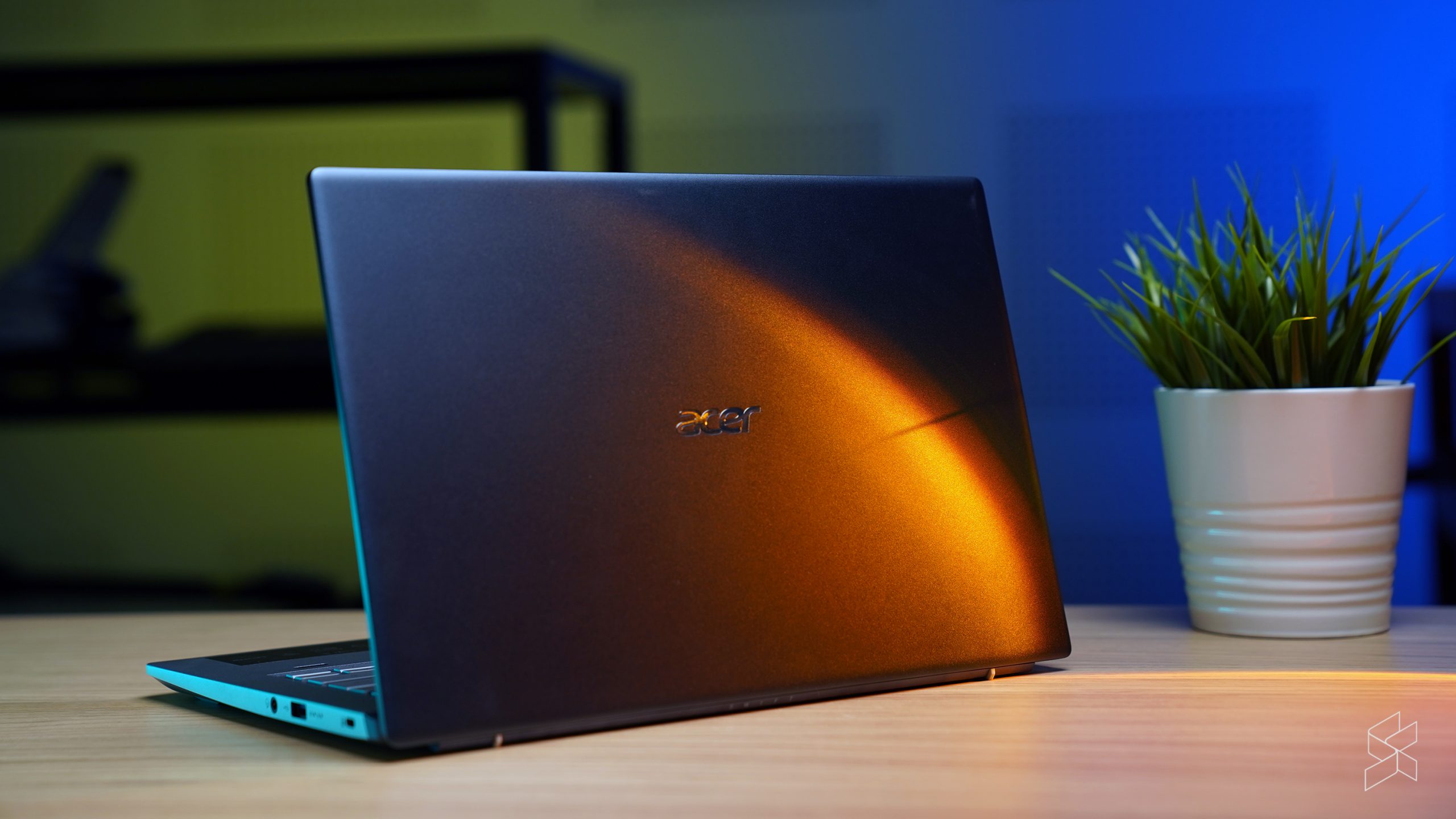I’ve had my eye on the Acer Swift X ever since it was first announced back in May of last year. It certainly took awhile to arrive on our shores though, only being officially available in Malaysia in October. That being said, I was still fairly excited to get my hands on the laptop.
Positioned as an entry-level creator-focused laptop, it’s certainly not as flashy as other productivity and creative machines that we’ve seen before such as the MSI Creator Z16 or Dell XPS 15. What the Acer Swift X does have going for it though is what’s inside. The model we received packs an AMD Ryzen 7 5800U processor, 16GB of LPDDR4X RAM, a 512GB SSD and an NVIDIA GeForce RTX 3050 Ti graphics card with 4GB of VRAM.
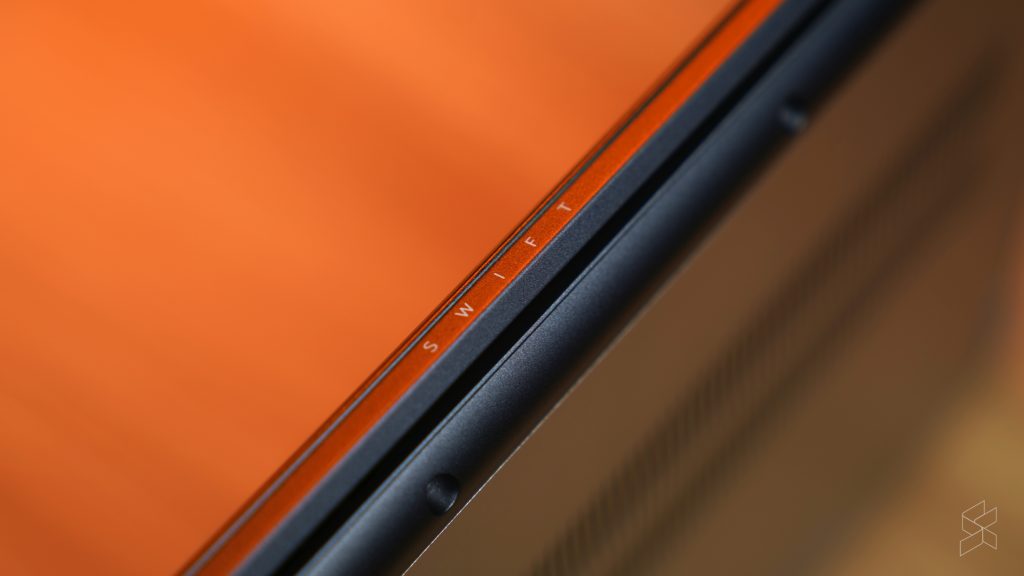
On paper, that certainly seems very impressive for a small, little 14-inch laptop, and you’d be right because the Acer Swift X packs a punch you’d never see coming.
Big performance from the little guy
Unlike most other creator-focused or gaming laptops, the Acer Swift X is configured a little differently from its peers. It has the AMD Ryzen 7 5800U, which as its name implies is a U-series processor. U-series chips are laptop CPUs that typically have a much lower power consumption, and so you’d normally find them in thin-and-light laptops. H-series chips on the other hand are laptop chips that have a higher power consumption but offer more performance too, and so you’d normally find them in beefier powerhouses, like the Acer Nitro 5 we reviewed awhile back. Intel mobile processors also have similar U-series and H-series lineups, though their 11th generation U-series chips use a different nomenclature such as Core i5-1135G7 and Core i7-1165G7.
With that being said, the Acer Swift X here packs a very big punch despite its size. Our Cinebench R23 tests showed it performing better than a 15W Intel Core i7-1165G7 in single core runs, and even matched the Core i7-11800H in the MSI Creator Z16 from my last laptop review. The AMD Ryzen 7 5800U also scored pretty well in multicore tests, again outscoring the H-series Intel chip from the MSI Creator Z16 (though the MSI laptop had its own heating issues). It really does show the huge strides AMD has made in its mobile chip division that even their supposedly weaker U-series chips are outperforming its rival’s H-series processors. The included SSD isn’t the fastest, but it’s still many times faster than a SATA SSD and ought to be sufficient enough for most if not all tasks.
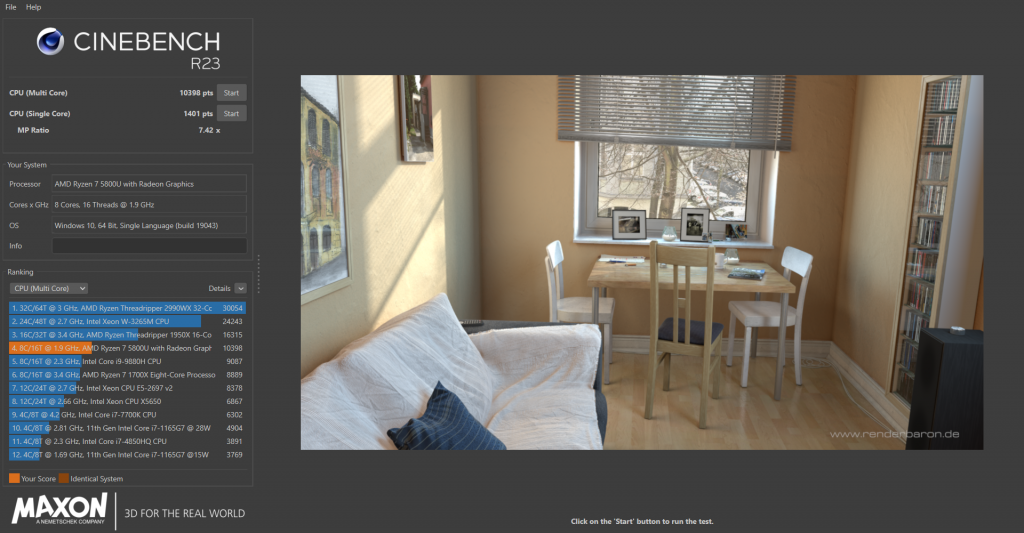
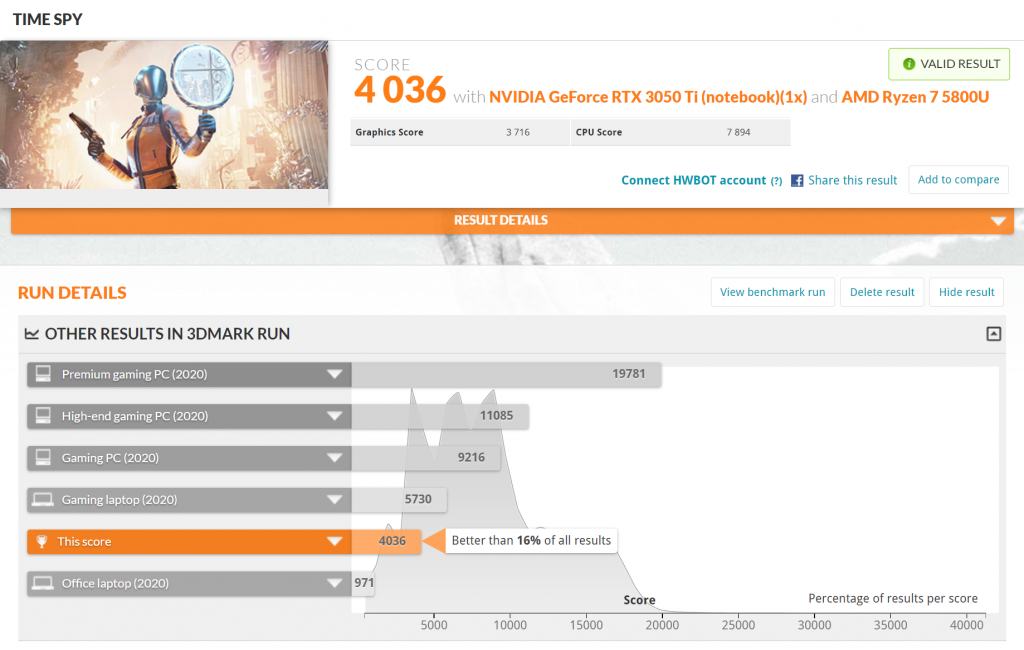
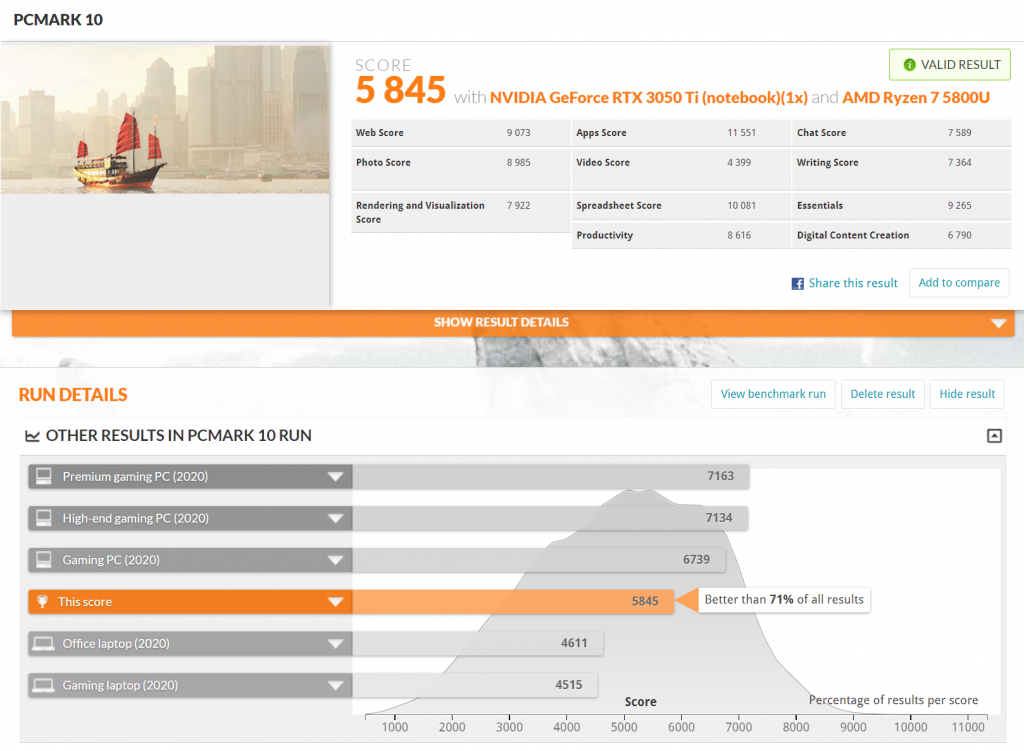
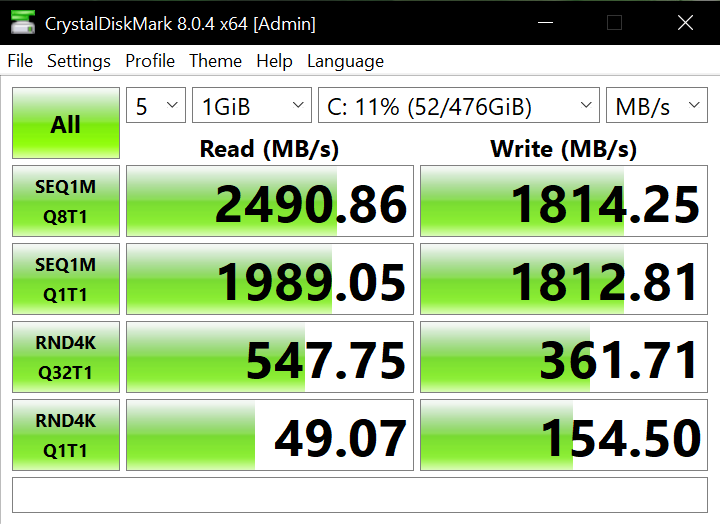
Apart from just pure performance numbers in synthetic benchmarks though, I found that it could still hold its own in other applications too. For instance, it rendered our Samsung Galaxy Z Flip 3 review video in 4K using Adobe Premiere Pro 15.4 in a respectable 11 minutes 29 seconds. If you like to wind down after work with some gaming, you’d be pleased to know that the Swift X has no issue with that too thanks to the very solid NVIDIA GeForce RTX 3050 Ti. It’s not the most powerful GPU, or even the most powerful RTX 3050 Ti as it’s limited to a 45W TGP, but it’ll do a great job at most eSports titles or even newer games at medium settings. One great thing for gamers to note is that the RTX 3050 Ti lets you use NVIDIA DLSS technology to get higher FPS numbers in supported games.
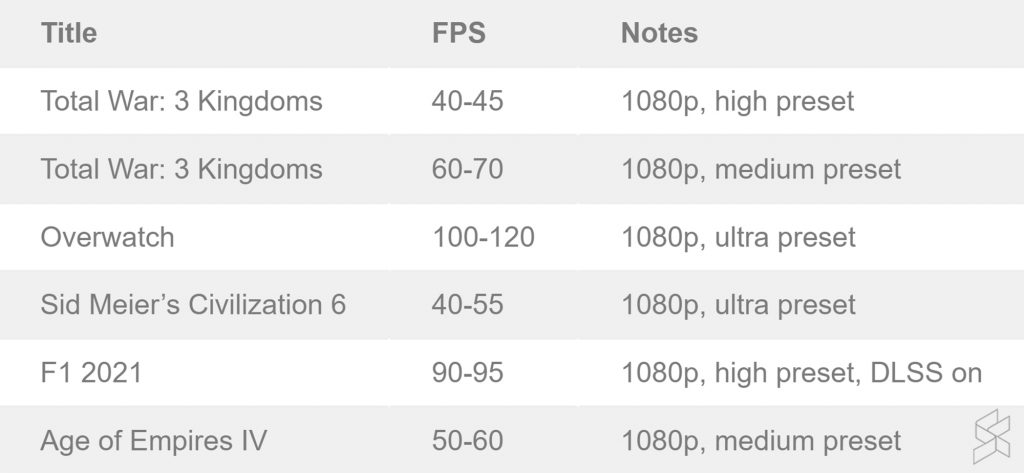
Meanwhile, as for temperatures, I was actually fairly pleased with how well the Acer Swift X did. It idles at around 45-55, and would rise to around the 65°C mark while working. The hottest I saw it go was a peak of 91°C during the benchmark tests, though it would quickly drop back to the mid-80s. The Swift X would also rise to around 85°C during long render sessions on Adobe Premiere Pro. I also never found the keyboard or palm rest to be too hot, only warm to the touch at most. Overall, the Swift X was reasonably cool, and the fans weren’t obnoxiously loud either. It’s certainly not the thinnest laptop at just under 18mm thick, but I honestly have no issue with it being a little thicker if it meant great thermals. The ‘stereo ring’ fans that Acer are using for cooling here certainly seem to be pulling its weight, along with the numerous cutouts providing ventilation.
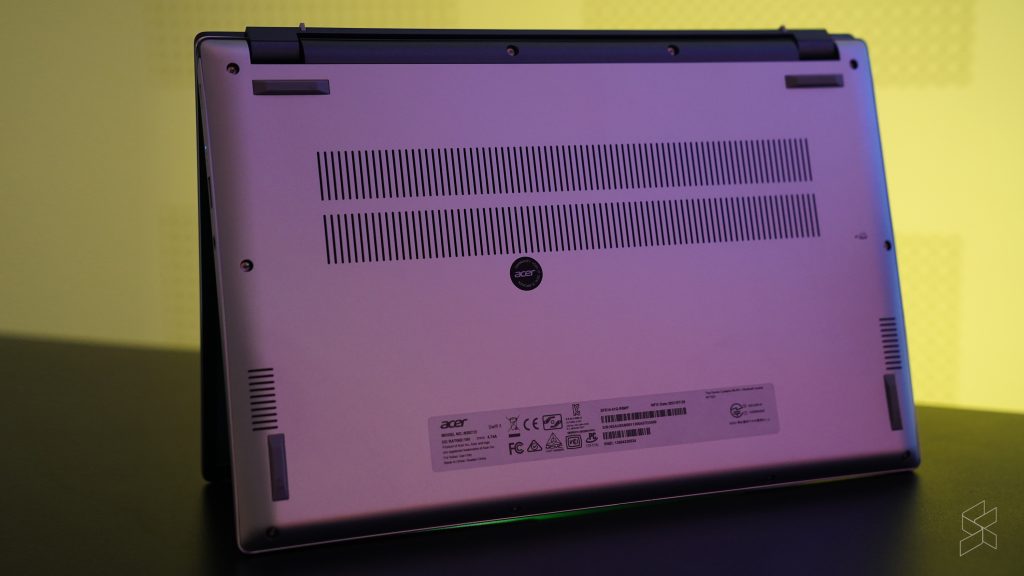
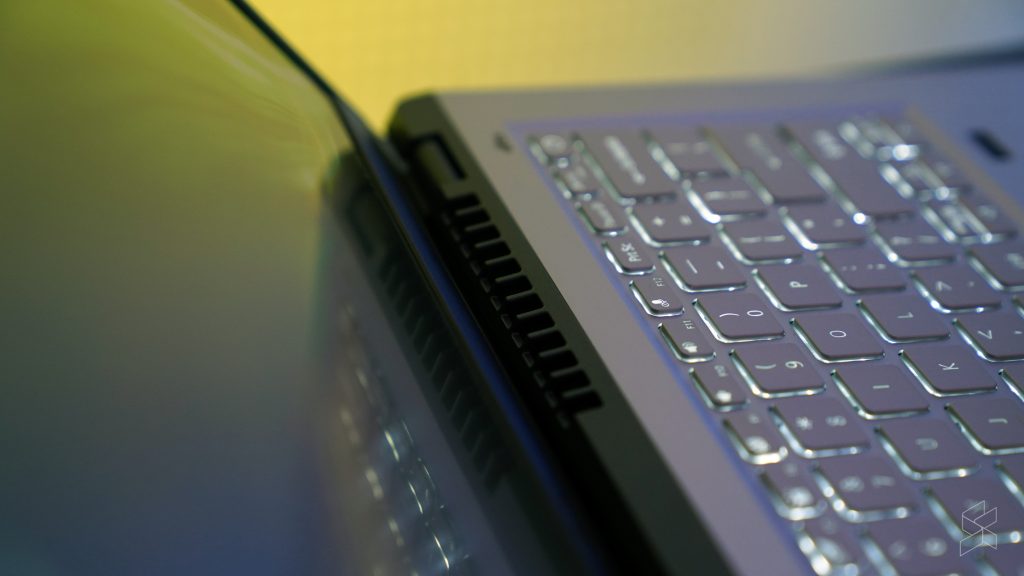
Battery life meanwhile was somewhat respectable. At my normal usage while working—this means a fair amount of Chrome tabs open with programs like Adobe Photoshop, Discord, Slack and Spotify among others open in the background—I managed to get around 5 hours. This was with brightness maxed out mind you, while the laptop was also set for best performance. You’ll likely be able to get much more battery life out of the laptop if you were willing to drop your brightness and tweak performance mode for best battery life.
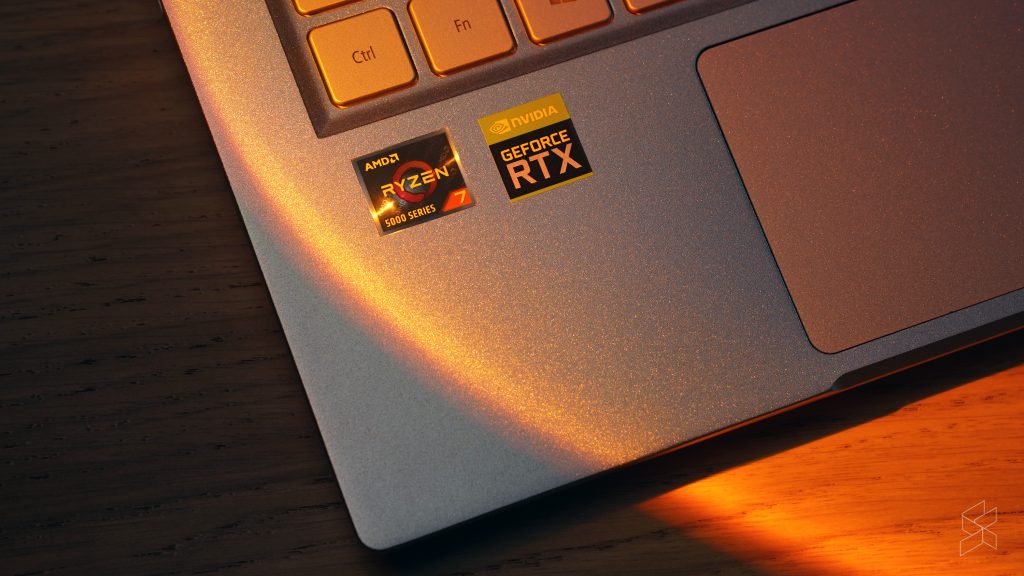
Of course, all this talk about how good the Acer Swift X performs is pretty much what Acer set out to do when they announced this laptop: very good performance under the hood for its price of entry level content creation. However, seeing as this was meant for content creators and productivity freaks on the go, I was fairly surprised by how poor the audiovisual experience was on this laptop.
Mediocre screen belies its true potential
Honestly, when I first opened up the Acer Swift X, I did a double take. The Swift X has a 14-inch, FHD IPS display with a regular 60Hz refresh rate. It’s been so long that I’ve used a laptop with a 16:9 display that it just seemed so unusual these days, especially as I also use an atypical 21:9 monitor at home. I bring up the aspect ratio because while the Acer Swift X seemed to be targeting content creators and those who are looking for a powerful productivity laptop, reverting to a 16:9 display means the screen’s real estate is at a huge disadvantage compared to other laptops in the market.
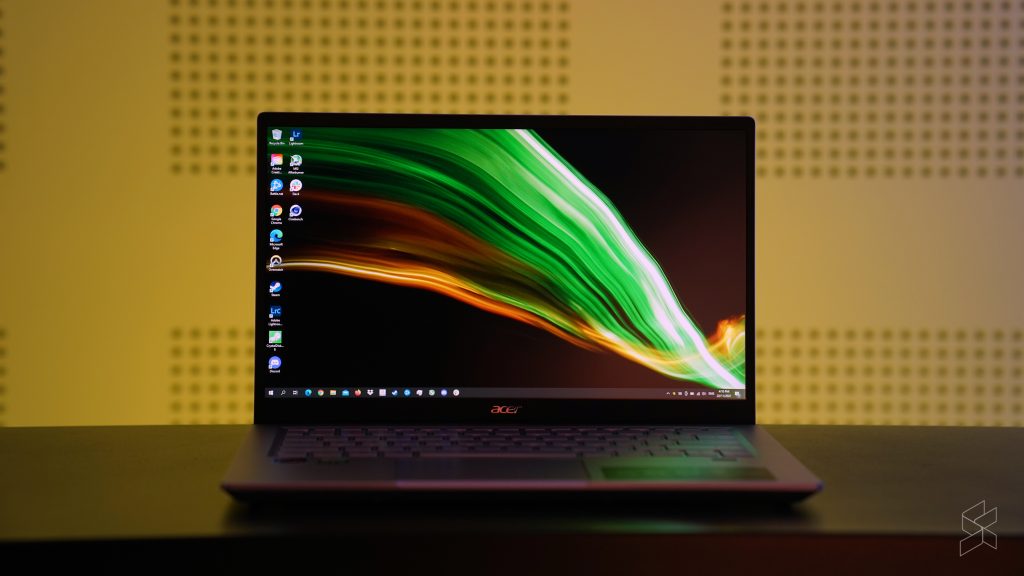
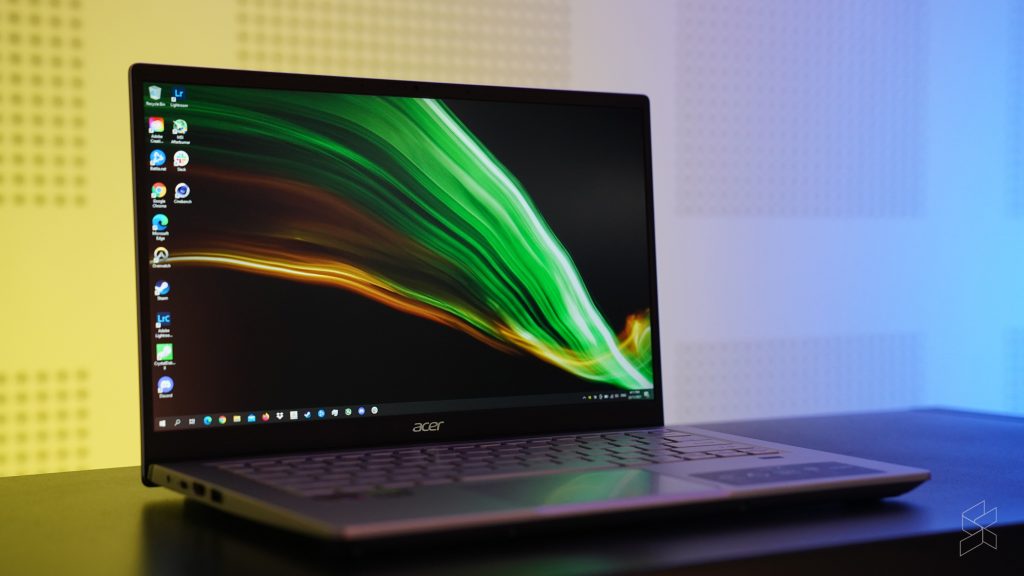
Compare that to something like the 16:10 display on the MSI Creator Z16 or the 4:3 screen on the Microsoft Surface Laptop 4 and the lack of vertical on the Swift X definitely felt like a strange design choice from Acer. But that’s not the only nitpick I had with the screen too. For something that you’re supposed to work, edit and create with, the screen is just a tad too dim. It’s just not bright enough when you’re working in a well lit environment, and really is a shame when you remember just how powerful the Swift X is. The 60Hz refresh rate meanwhile wasn’t too much of a dealbreaker to me, seeing as this wasn’t positioned as a gaming laptop though a higher refresh rate would’ve been nice.
The speakers continue the overall feeling of disappointment here. It’s just lacking any real oomph, with little to almost no bass at all on the Swift X’s stereo speakers. Normally, I’d mention a comparison to something like the Apple MacBook Pro but it loses to the MacBook on pretty much every front. In fact, when I did a short audio comparison between the Swift X and the Apple iPhone 13 Pro Max, both my colleague Dzamira and I found the iPhone 13 Pro Max a tad clearer, even if the Swift X was a little louder than the smartphone. And when you combine the dim display with the weak speakers, it just makes both consuming and creating content on the Swift X not as enjoyable as it should be.
Bloatware continues to hurt Acer’s offerings
The last time we had an Acer laptop come through our doors was when we reviewed the Acer Nitro 5. It’s perhaps a sense of deja vu then that I have almost the same complaints as before with the Swift X. Upon setting up the laptop on first boot, I was greeted with so, so much bloatware. Programs like Norton Antivirus, Dropbox and VPN services popped up all over, not only taking up screen space on the desktop but the notification corner as well. I mean I knew how to remove them sure, but for those without the technical know-how they will need to live with these programs taking up precious CPU resources.

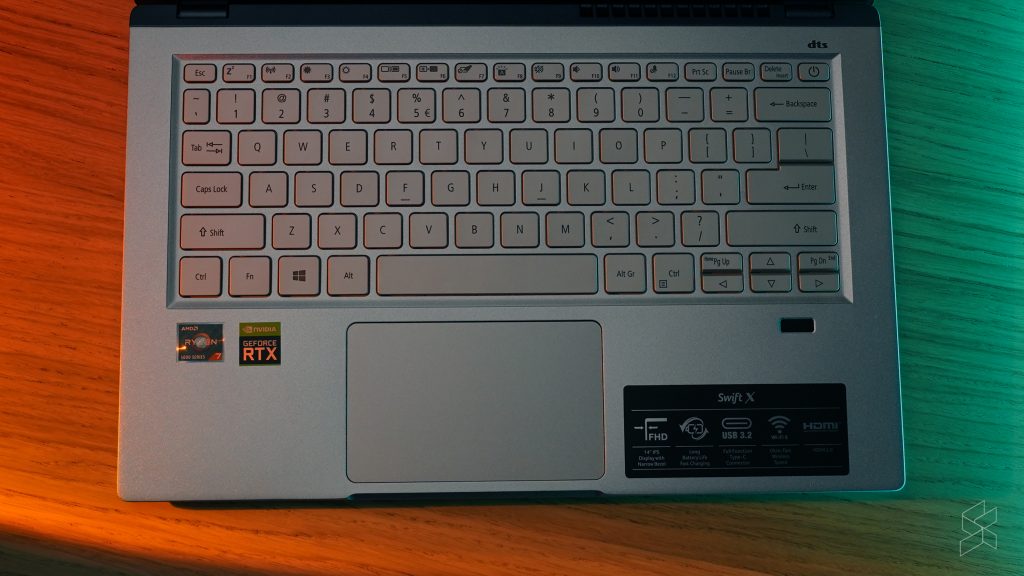
Once the bloatware was uninstalled though, the laptop was fairly decent to use. At just 1.4kg it was actually pretty light once you consider what it’s packing under the hood, and the keyboard wasn’t too egregious when it came to deck flex. In fact, and I mean this in a very good way, it’s quite well built for an Acer laptop. The screen didn’t really wobble about, and the blue colourway fits in any professional setting. The keycaps could’ve been a little bigger, but the typing experience was still just fine. The touchpad on the other hand wasn’t great by any means, but again it works just fine and is big enough to use if you didn’t have a mouse with you.
I was also pretty satisfied with the ports selection on the Acer Swift X. I personally was very happy to see that it had a full fat HDMI port, meaning that I could plug it to a secondary monitor without the need for a USB hub. Seeing as content creators would like to have more screen real estate, it’s nice to have the HDMI port on hand. There’s also two USB-A ports and a further one USB-C port on the sides of the laptop. You could charge it with the USB-C port, though the included 90W charger uses a proprietary barrel port. The 720p webcam above the display is honestly quite bad though, and I wouldn’t use it for anything other than a Zoom call.
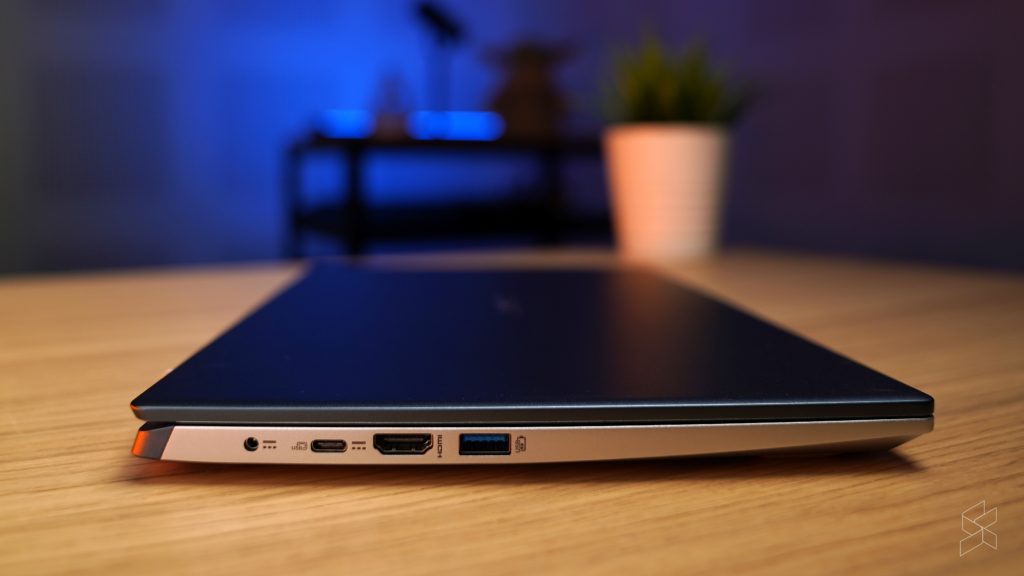
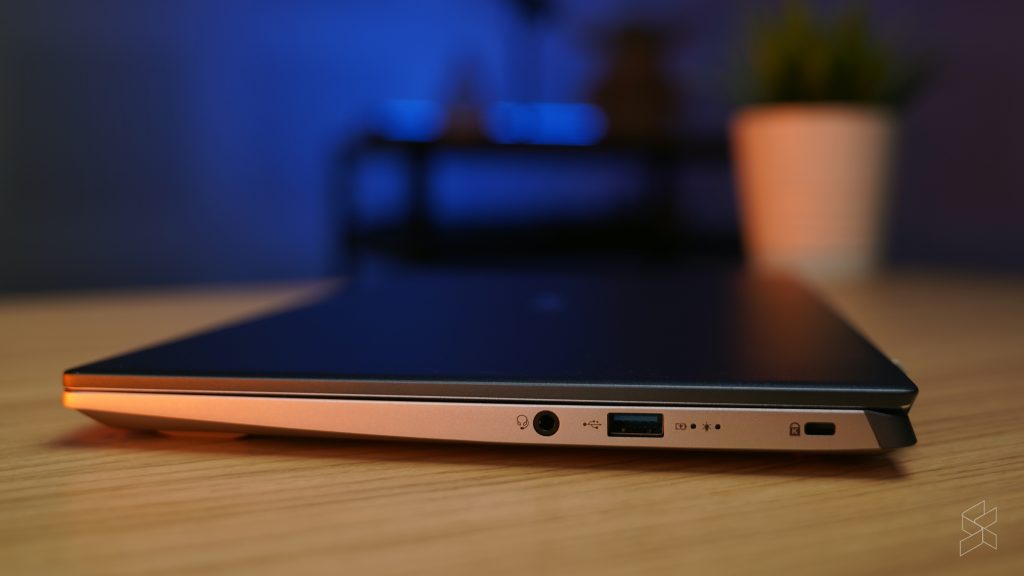
The Acer Swift X is perhaps my favourite laptop from 2021
Despite its shortcomings, I loved my time with the Acer Swift X. I know it’s not for everyone though; it’s not the most powerful, nor is it the most portable. It’s not very stylish, and the display isn’t the best by any means. But what it does have going for it is its price to performance ratio. Content creator laptops can get very expensive very fast, and it’s nice to see a very good option at this end of the price range. This means budding content creators or students in university now have an option that won’t break the bank while still being able to fulfill all of their requirements. I probably won’t recommend the base model though, simply because the non-upgradable 8GB of RAM might not be enough for most people. You’ll be able to get it for yourself from Acer’s official store on Lazada and Shopee.
- Acer Swift X, AMD Ryzen 5 5600U, RTX3050 Ti, 8GB RAM, 512GB SSD – RM4,299
- Acer Swift X, AMD Ryzen 7 5800U, RTX3050 Ti, 16GB RAM, 512GB SSD – RM4,999
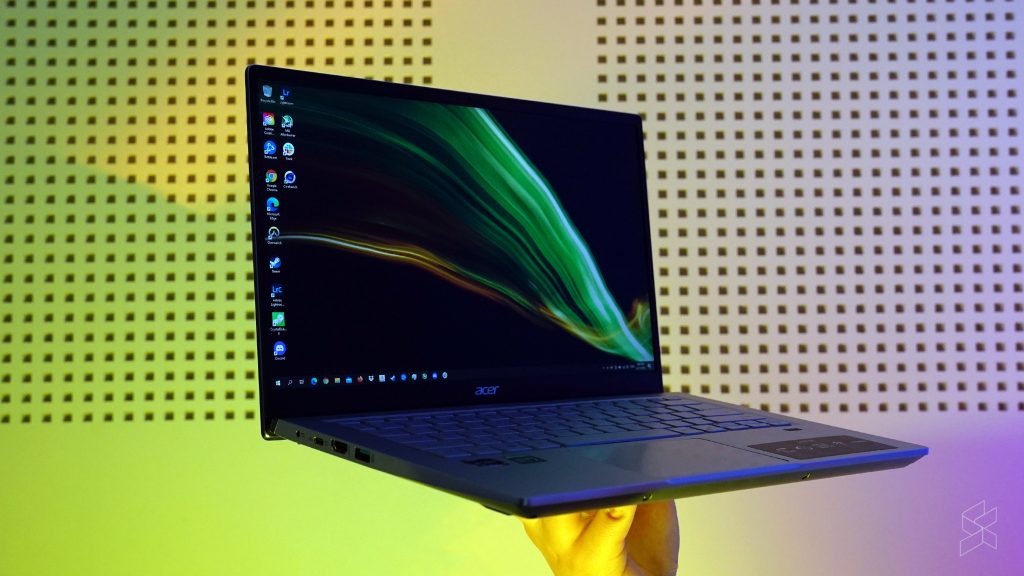
The Acer Swift X is a rare breed when it comes to laptops in general. Not many laptops come with the lower power consumption U-series processors while still having a discrete graphics card. In fact, while trying to find alternatives to the Acer Swift X, I only found the HP Envy 14 to be of similar spec and price to the Acer Swift X. It costs more though at RM6,399 and comes with arguably weaker silicon, packing an Intel Core i7-1165G7, an NVIDIA GeForce GTX 1650 Ti, 16GB of RAM and a 512GB SSD. You will though get a 14-inch, 16:10 WUXGA IPS display that’s also brighter at 400nits, which could be more important to you than simply pure performance.
If anything, the best alternative to the Acer Swift X could actually just be… the next generation Acer Swift X. As mentioned earlier, the Acer Swift X was actually announced in late-May of last year, but was only available in Malaysia in October. Since then, Acer has announced in CES 2022 that they’ll be featuring two upgraded versions of the Swift X, both to feature 12th Generation Alder Lake Intel processors. The new 14-inch Acer Swift X will come with a 16:10, 2240 x 1400p resolution display that’s brighter too, at 400nits. The Swift X 16 meanwhile comes with a 16-inch, 16:10 2560 x 1600p display, but trades the RTX 3050 Ti for Intel’s upcoming Intel Arc graphics card. In other words, Acer has pretty much rectified the one big thing I didn’t like about the Swift X. Pricing and availability has yet to be confirmed by Acer though.
At the end of the day, the current Acer Swift X really is my favourite laptop on the market right now. I think if I was heading off to college or university right now, the Acer Swift X would be the absolute ideal companion. It packs all the performance I need for work, while still having the capabilities for some time off when gaming. Battery life is also solid enough to allow for a whole day of classes if I tweaked the settings a bit. Even anyone seeking a cheap entry-level gaming laptop might want to consider this one. It’s a bit of a shame that it took until October of last year for it to arrive on our shores really, but until the next generation Acer Swift X appears, this will perhaps be the best laptop for anyone wanting portable performance while on a budget.

